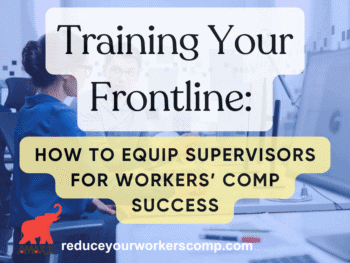
No Extra Care “Just in Case”
When employers do not have injury triage services available, immediately following an injury it is the employee or the employee’s supervisor who determines the level of medical care that is needed. An employee, who is in pain from an injury, and with no medical training, will normally opt for the highest level of service available. Supervisors may default to a higher level of care to mitigate their risk “just in case.”
With a injury triage service, specially trained nurses are available 24/7 to evaluate the injury with the employee by telephone. The best services use highly trained nurses, and sophisticated software, to ascertain the severity of the employee’s medical symptoms and direct the employee to the most appropriate level of medical care. By guiding the injured employee in the selection of medical care, costly hospital emergency room treatment or unnecessary clinic visits can be prevented. More serious cases can be identified even when the employee may not recognize the severity. Plus, when off-site medical care is needed, the employee receives recommendations on preferred “in-network” medical providers.
Triage Nurse Communicates with Relevant Stakeholders
The triage nurse communicates his/her involvement to the medical provider, TPA, and other stakeholders by telephone, e-mail, or even secure server-to-server data feeds to maintain the continuity of the employee’s medical care. Injury triage assists the medical provider, but it does not replace the medical treatment provided by the medical provider. Injury triage benefits the medical provider by allowing the medical provider to concentrate on the patients in the most need of the medical provider’s services.
The triage nurses are trained and supported to utilize their critical thinking skills and listening skills to understand the employee’s medical condition, and evaluate the pain, anxiety and the employee’s understanding of their medical condition. The triage nurses use their communication skills to explain to the employee the nature of their injury, the type of treatment needed and their knowledge of the expected recovery time.
The software used by the triage provider will contain a series of algorithms to assist in making the best recommendation for the employee, whether it is emergency care, an appointment with a medical provider, self-care, or referral to telemedicine. In one provider’s patented process, the employee’s symptoms are evaluated by asking a series of questions beginning with the most acute and working downward to the least acute. Depending on the employee’s answers, the algorithms guide the triage nurse to the proper level of medical care. When the employee needs more than self-care, the triage nurses are trained not to give the employee a diagnosis, but to direct the employee to the most appropriate medical provider.
Ways Triage Improves Bottom Line
In addition to reducing cost by sending the employee to the proper level of medical care, the triage nurse improves the bottom line by:
– Increasing the percentage of self-care, reducing claim volume
– Reducing the number of injuries that become OSHA reportable (by avoiding unnecessary medical claims)
– Increasing the number of claims handled through the medical provider network
– Reducing the employee’s time off work, increasing productivity
– Improving morale by having a trained nurse available immediately when an employee is injured
– Reducing the occurrences of fraud (triage provides immediate documentation of incidents, and the best systems record the call)
– Providing round-the-clock control of medical treatment for employers who have multiple work shift
– Identifying potential life threats and serious cases not recognized by injured employees.
Check Accreditations Before Selecting Triage Service
When selecting an injury triage service, the employer should look for triage providers who can verify their competency with experience, references, and the proper medical accreditations and certifications. URAC (previously known as Utilization Review Accreditation Commission, but now known only by their acronym URAC) is the largest accrediting body for health care. URAC offers many types of accreditation; triage is covered under the “Health Call Center” category. If the triage provider has a URAC accreditation for Health Call Center, you will know the company is performing in accordance to national standards.

Contact: mstack@reduceyourworkerscomp.com.
Workers’ Comp Roundup Blog: http://blog.reduceyourworkerscomp.com/
©2023 Amaxx LLC. All rights reserved under International Copyright Law.
Do not use this information without independent verification. All state laws vary. You should consult with your insurance broker, attorney, or qualified professional.
















